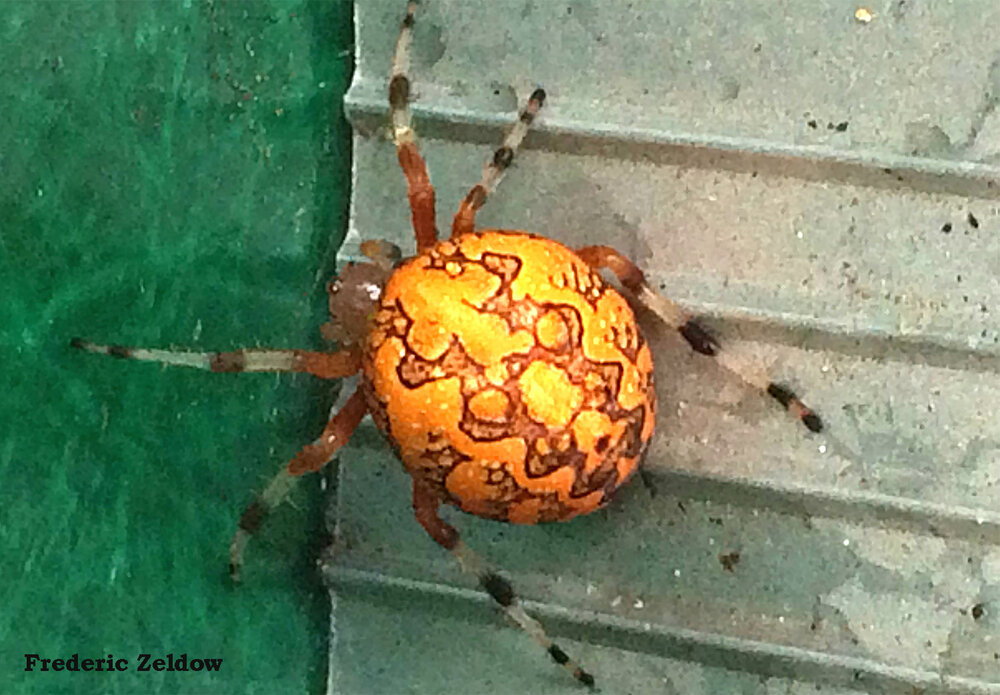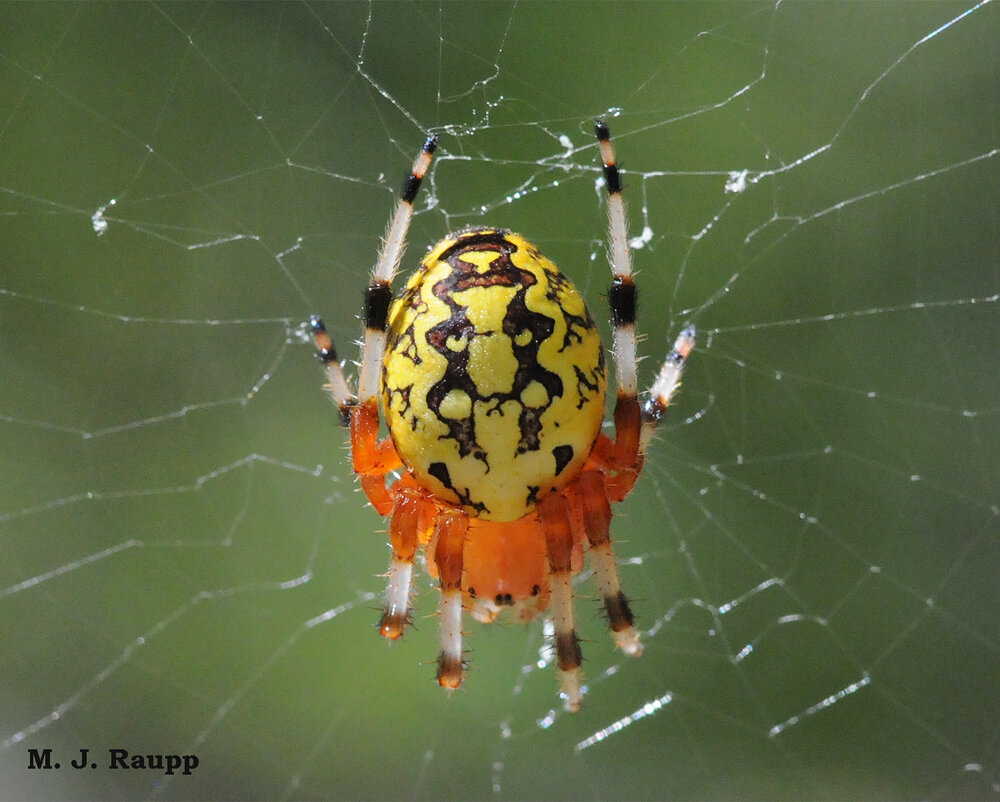A gorgeous speedy spider: Marbled orb-weaver, Araneus marmoreus

Marbled orb weavers can be found in residential landscapes, fields, and forests from spring until late autumn in Maryland. Despite its scary appearance this orb-weaver poses little threat to humans greater than 2 inches tall. Photo credit: Frederic Zeldow
A few weeks ago, we visited a rockin’ orb weaving spider, the black and yellow garden spider, and watched it dispatch a dastardly brown marmorated stink bug. This week we meet another amazing orb weaver, the beautiful marbled orb-weaver. Usually in mid-autumn Bug of the Week begins to receive images of these fantastic predators and this year was no exception. I had the good fortune to bump into one of these beauties while wandering a trail along the Patuxent River in Columbia, MD. One look at the ornate coloration and patterns on the abdomen of this spider leave no doubt about how this beguiling spider got its name. The marbled orb-weaver is found throughout the contiguous lower 48 states and as far north as Alaska. It is also a common denizen of forests and fields in Europe.

Markings of this immature marbled orb-weaver are stunning.
Like other members of its clan, the marbled orb-weaver spins a web of radial threads like the spokes of a wheel upon which spiral sticky capture-threads are placed. Capture-threads are remarkable evolutionary products of millions of years of bioengineering. Each capture-thread has a core of silk bearing scores of tiny droplets of viscous glycoproteins. These glycoproteins give the web its stickiness. Hapless insects that blunder into the web are trapped by the sticky silk until the spider zooms to its future meal, where it delivers a lethal paralyzing bite. The marbled orb-weaver has a clever strategy to capture prey while limiting exposure to its own enemies. After constructing its amazing web of death, the marbled orb-weaver hides in a retreat near the web. The retreat might be a cluster of dead leaves or a piece of loose bark. A strand of silk called a signal thread runs from the web to the retreat. When a potential victim is snared by the web, vibrations travel along the thread and alert the orb-weaver to the presence of its prey. The message is simple and clear – dinner is about to be served.
Hiding in a folded leaf near its intricate web, a marbled orb-weaver awaits a victim. In a flash that even slow motion fails to capture, the orb-weaver descends to the center of the web to find its prey. Good fortune befalls a small wasp that strikes the web as it somehow manages to escape. Just to share what the orb-weaver might have done, I included a short clip to show how its cousin, the spotted orb-weaver, wraps up its prey.
Acknowledgements
“The National Audubon Field Guide to North American Insects and Spiders”, by Lorus and Margery Milne, and “Estimating the Stickiness of Individual Adhesive Capture Threads in Spider Orb Webs”, by Brent D. Opell, were used as references for this episode. Bug of the Week gives special thanks to Frederic Zeldow for the nice picture of a marbled orb-weaver and inspiration for this episode.
This post appeared first on Bug of the Week